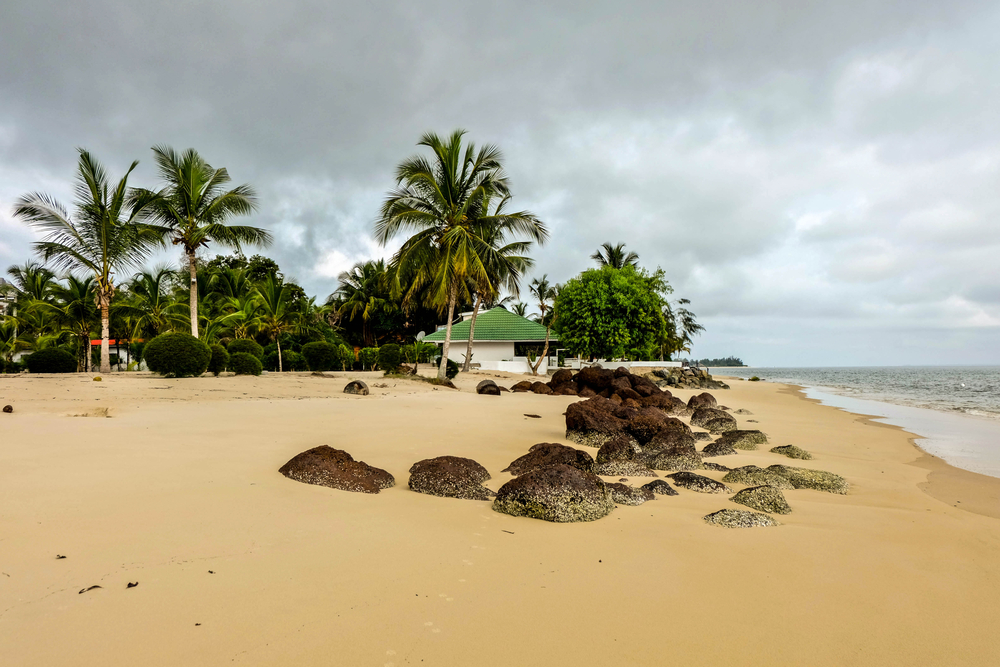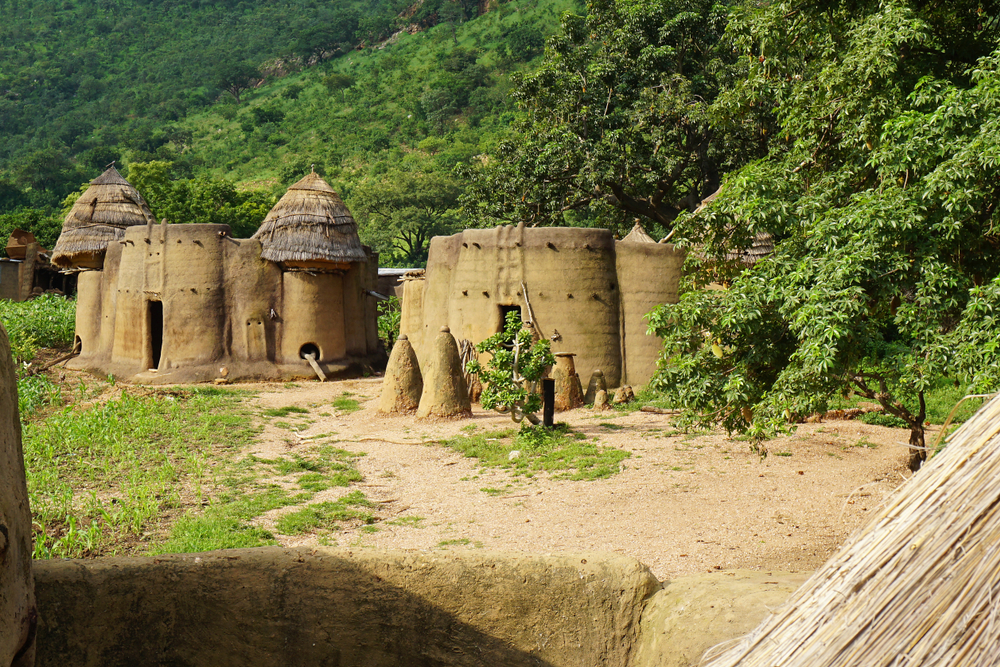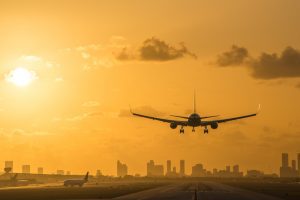Since the world is a spherical object, the question, “Which country is on both sides of the world?” may be a bit confusing. However, humans tend to divide things into sides, or pieces, so we’ll take a look at the answer to this question keeping that in mind.
Earth is divided into East and West and North and South hemispheres. There’s even an International Date Line that separates “today” from “tomorrow.” So, which countries fall across both of these sides?
The 13 countries that are on “both sides of the world” are Brazil, Colombia, The Republic of Congo, Democratic Republic of Congo, Ecuador, Gabon, Indonesia, Kenya, Kiribati, Maldives, Sao Tome and Principe, Somalia, and Uganda – if we divide the world into north and south by using the equator.
Seven countries are on both sides of the world if we divide the world (using the prime meridian) into east and west. Zero countries are on both sides of the world if we divide Earth by the International Dateline.
Table of Contents
The 13 countries on both sides of the world (divided by the equator)
Brazil

The word “Brazil,” meaning “red like an ember,” is derived from pau brasil (brazilwood), the tree that once flourished all along the Brazilian coast and produces a dye that was deep red. Brazilwood was highly valued in the eyes of European traders who traveled to Brazilian beaches during the sixteenth century to make trade deals with Tupi-Guarani natives.
Colombia

Colombia is named after the famous Italian navigator, explorer, and colonizer, Christopher Columbus. Colombia is the 29th-highest populated nation on the planet.
The country is a sovereign nation located in the northwest region of South America, with territories located in Central America. Its capital and largest city is Bogota. Colombia’s official language is Spanish, and the Peso (COP) is Colombia’s currency. People who live in Colombia are known as Colombians.
Republic of Congo (or Congo-Brazzaville, also known as the Congo Republic)

The Republic of Congo and the similarly named Democratic Republic of Congo (DRC) share a border, the Congo basin.
Because of Congo-Brazzaville’s proximity to the ocean, the country is incredibly humid. As with most tropical regions, Congo experiences distinct wet and dry seasons.
Democratic Republic of Congo

Nine countries border Africa’s second-largest country, the Democratic Republic of the Congo. The inhabitants of the DRC comprise more than 200 ethnic groups and almost 250 languages and dialects are spoken across the country.
The country’s capital city, Kinshasa, is the second-largest francophone city in the world.
Ecuador

Ecuador, a country located in the middle of South America, is famous for many things. Its lively culture, varied landscape, and incredible climate all make Ecuador is a great place to visit.
Ecuador is also a very progressive country. A few years ago, in 2008, Ecuador became the first nation worldwide to recognize Nature’s rights. In 1851, Ecuador ended slavery and released all of its slaves, one of the earliest countries to do so.
Ecuador also became the first country to abolish the death penalty.
Gabon

Around 80–85 percent of Gabon is covered in rainforests, 11% of which is dedicated to national parks. These parks are famous for being some of the most extensive national parks around the globe.
This is impressive, considering the entire territory of Gabon is about a third less than that of the U.S. state of Colorado.
Gabon hosts more than 80 percent of the world’s gorilla population; the cult U.S. television series Survivor took place in Gabon in 2008.
Indonesia

The name “Indonesia” was coined in the 1800s by James Logan, editor of the Singapore-based Journal of Indian Archipelago and Eastern Asia, as a shorter version of “Indian Archipelago.” Indonesia was first referred to as the Indian Archipelago and East Indies Islands.
Indonesia is famous for its megadiversity. It contains an abundance of species, some of which are not found elsewhere in the world. Only 17 countries can claim this distinction.
With an estimated 264 million people, Indonesia is the fourth-highest populated nation globally, following the United States, India, and China.
Kenya

Mount Kenya, after which its country is named, reaches a height of 17,057 feet at its summit. It adjoins the world’s second-largest freshwater lake, Lake Victoria.
The theory of evolution suggests that Kenya could be the place of birth for humans. This is backed by evidence suggesting that one of the first human ancestors ever discovered was found in Kenya.
Kiribati

Kiribati is officially known as the Republic of Kiribati. Kiribati has a small population and faces major issues due to climate change.
The inhabitants of Kiribati are known as I-Kiribati. They pronounce ‘ti’ with ‘s’. Thus, they pronounce ‘Kiribati’ as ‘Kiribas’. The Australian dollar serves as the official currency for Kiribati.
Kiribati’s capital, Tarawa, is an island. The capital is located somewhere between Australia and Hawaii. Of the total of 33 islands in Kiribati, only 21 are inhabited.
The Maldives

The Maldives is an Indian Ocean Asian nation. The country’s official language is Maldivian (Dhivehi), and its currency of choice is the Maldivian rufiyaa (MVR).
The Maldives comprise 1192 coral reefs divided into 26 atolls, arranged in a north-south orientation, which span over the Indian Ocean for roughly 35,000 square miles. Ninety-nine percent of the Maldives is water.
Sao Tome and Principe

Sao Tome and Principe is an island nation with twin islands located on the west coast of the equatorial region in Africa inside the Atlantic Ocean. The majority of those employed in making sugar in Sao Tome and Principe were Jewish people who had been exiled from Europe and enslaved people brought to Sao Tome and Principe from the African mainland.
There are no dangerous animals like lions, tigers, deadly snakes, or spiders in the forests of Sao Tome.
Somalia

Mogadishu is Somalia’s capital and its largest city. The Federal Republic of Somalia (the country’s official name) is located on the Horn of Africa.
Somali and Arabic are the official languages spoken in Somalia. Women were not allowed to dine in restaurants with men until the 1990s.
Somali women are not required to wear Islamic veils, but they aren’t allowed to interact with males in public. Somali women must be submissive to males and perform their duties as mothers, daughters, and wives.
Uganda

Uganda is an East African nation. The principal languages spoken by its citizens are English and Swahili. However, most people speak Luganda as well.
The country is home to more than 10% of the world’s bird species. However, these species are under threat, as Uganda is experiencing increasing deforestation.
To stop the harmful effects of deforestation, policymakers must find a solution to stop the destruction of forests. In Uganda, people are expected to plant three trees for every tree they cut down.
The 7 countries on both sides of the world (divided by the prime meridian)
Algeria

Algeria is a nation in the Maghreb region of North Africa. Algiers is the capital and the largest city. Arabic, as well as Berber, are the official languages.
The currency of the country is the Dinar (DZD). Algeria is the largest country in Africa, followed by the Democratic Republic of the Congo.
The official religion of Algeria is Islam, and it is not legal to preach (or advocate) to people in the country about other faiths. Algeria does not have any external debts.
Burkina Faso

This country is the home of Thomas Sankara, the “African Che Guevara,” so called because of his radical left-wing policies. Sankara ruled Burkina Faso for four years from 1983 until he died under mysterious circumstances in 1987.
Burkina Faso has one of the youngest populations in the world. Burkina Faso is a landlocked country.
France

France is a Western European nation. It is home to many overseas regions and territories as well. French is the official language, and the French use the Euro (EUR) currency.
Cities around the world are usually dotted with numerous “Stop” road signs. However, in the whole of Paris, there is only one “Stop” sign.
France is peculiar in another way, too – in France, you are legally permitted to marry a deceased person.
Ghana

Ghana, known officially as the Republic of Ghana, is located in the subregion of West Africa, in the Gulf of Guinea, which is itself in the Atlantic Ocean. Accra is the capital and the largest city.
Ghana’s national language is English. The Ghanaian Cedi (GHS) is the official currency.
Mali

Mali’s official name is the Republic of Mali, and its capital city is Bamako. Rock art discovered in the Sahara indicates that Mali was inhabited from 10,000 BC when the Sahara had a rich and fertile fauna.
The wealthiest man to have ever lived (Mansa Musa, the King of Mali between 1280 and 1337) and the world’s most enormous mud structure are both from Mali. The Mali Empire was once the best recognized and largest pre-colonial African state.
Mali was established during the 11th century and was in existence until the 16th century when it was taken over by Morocco.
Spain

Spain has the fourth-highest number of UNESCO World Heritage Sites, just after China and Italy. In August 2021, there were 49 World Heritage Sites in the country.
Spanish is among the second most widely spoken language in the world, with more than 45 million speaking it. It is second only after Mandarin Chinese, with English being one spot behind it.
Togo

Officially known as the Togolese Republic, Togo is in West Africa. French is the official language, and the West African CFA franc (XOF) is its currency of choice.
Togo and its environs were referred to in the past as ‘the slave coast’ between the 16th and 18th centuries, as Europeans would visit Togo in search of slaves. In the local Ewe language, Togo means “the house of the sea.”
The UK (United Kingdom)

Just to clarify:
- Great Britain consists of the island of Great Britain and its three regions: England, Scotland, and Wales, each comprising autonomous zones.
- The United Kingdom comprises Great Britain and Northern Ireland.
The Brits are well-known for their love of tea, and it is estimated that Brits collectively consume an average of around 165 million cups each day.
The UK is linked to the European continent through the Channel Tunnel. At 21 miles long, this tunnel is the second-longest tunnel in the world. It connects the English city of Dover to the French city of Calais.
The International Date Line “cheats”
The International Date Line “cheats” because it zigzags past countries it ought to split if it was perfectly straight. Because of this “cheating,” no country is ever in two days at once.

















